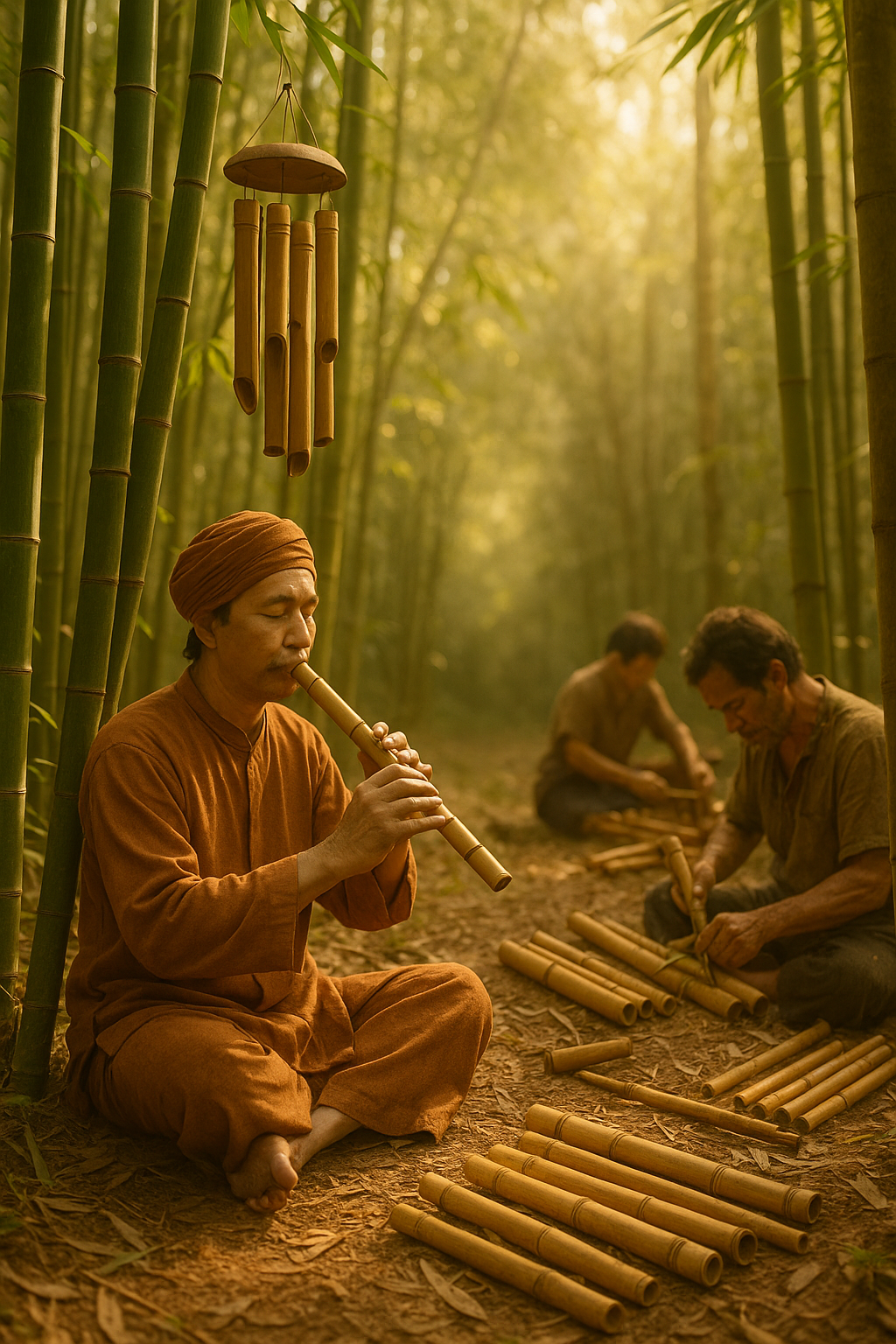
The Sound of Bamboo: When Nature Becomes Music
Share
For centuries, bamboo has been a symbol of strength, resilience, and simplicity. But beyond its utility in construction, crafts, and food, bamboo also holds a lesser-known role — as a bridge between nature and melody. In the rustling of its leaves, the chime of its hollow stems, and the intricate instruments fashioned from it, bamboo carries the essence of sound shaped by the earth itself.
🎐 Bamboo and the Whisper of Wind
Spend a moment beneath a bamboo grove, and you’ll hear it — the soft rustle of narrow leaves, the whisper of wind weaving through tall culms. These natural sounds aren’t just ambient; they are the raw, unfiltered music of the wild. Poets have long drawn parallels between bamboo groves and meditative music. In Japanese and Chinese gardens, the placement of bamboo isn’t only for aesthetics — it’s for acoustic harmony.
🪈 From Forest to Flute
Bamboo’s natural hollowness makes it an ideal material for wind instruments, particularly flutes. Cultures across Asia, Africa, and Latin America have long used bamboo to craft flutes, panpipes, and reed instruments. The Indian bansuri, the Japanese shakuhachi, and the Andean quena are just a few examples of bamboo’s musical journey.
Each piece of bamboo carries a slightly different timbre based on its age, diameter, and species — making every instrument unique. Musicians and makers often speak of bamboo as a collaborator, not just a material. It hums with its own voice.
🎶 The Orchestra of the Grass
Beyond flutes, bamboo has been used to make an entire ensemble of instruments: percussion, strings, and idiophones.
• The Angklung of Indonesia produces harmonious tones as its tubes are shaken.
• The Thai Ranat Ek, a xylophone-like instrument, features bamboo keys tuned to perfection.
• Bamboo drums and marimbas found in Africa and the Caribbean bring a rhythmic backbone to many traditional ceremonies.
What’s magical is that bamboo is not just the body of these instruments — it’s part of their soul. When a musician plays a bamboo instrument, they don’t just perform. They engage in an age-old dialogue between human touch and nature’s breath.
🔨 The Artisans Behind the Harmony
Crafting bamboo instruments is an art — and a livelihood — passed down through generations. Artisans spend weeks selecting the right bamboo, seasoning it, and carefully shaping it with fire, blades, and string. The final product is not just a tool — it’s a living sculpture of sound.
In many cultures, these makers are revered not just for their skills, but for their deep relationship with the forests they source from. Sustainable harvesting practices ensure that bamboo continues to grow and regenerate, making bamboo music inherently eco-conscious.
🌏 A Sound for the Future
As the world leans into sustainability and handmade heritage, bamboo instruments are seeing a revival. Fusion musicians are blending traditional bamboo sounds with electronic music, jazz, and world rhythms. Meanwhile, educational initiatives are helping preserve the craft by training young musicians and makers in villages from Tripura to Chiang Mai.
In a world full of synthetic sounds, bamboo offers a return to roots — both literal and musical. It reminds us that music doesn’t always come from strings and circuits. Sometimes, it comes from a forest — swaying, singing, and waiting to be heard.
